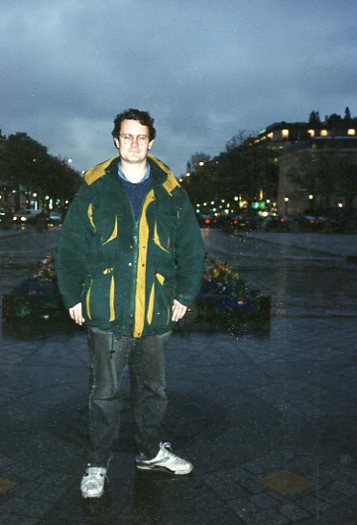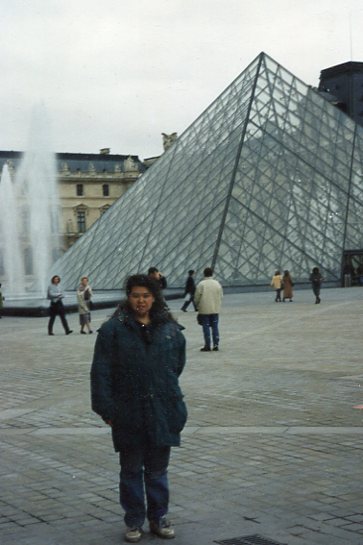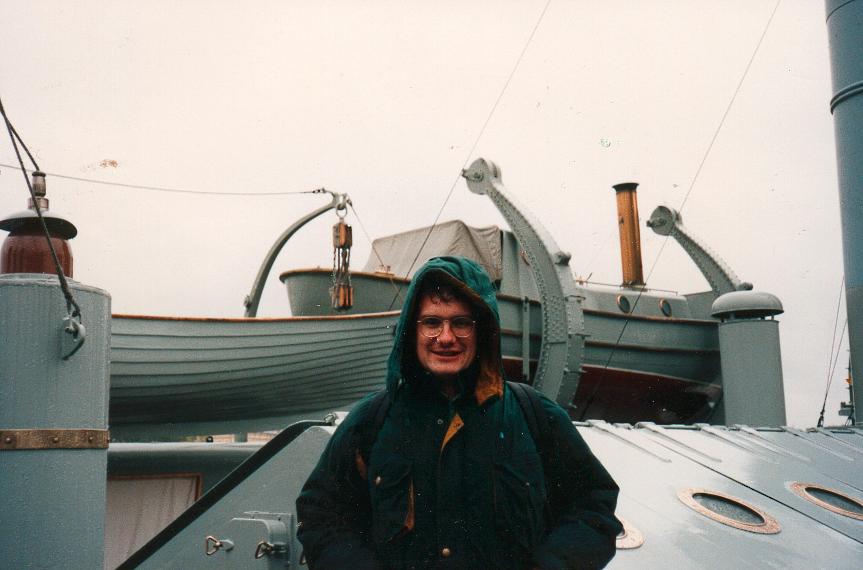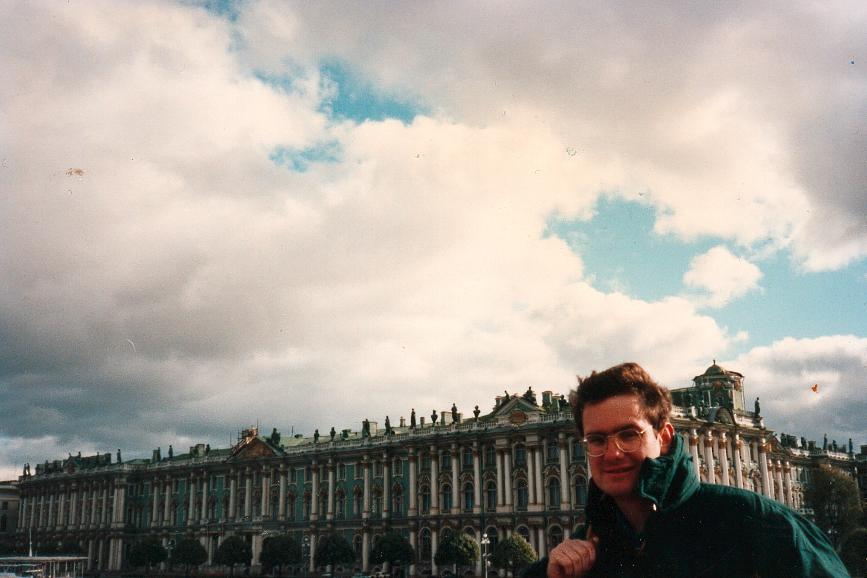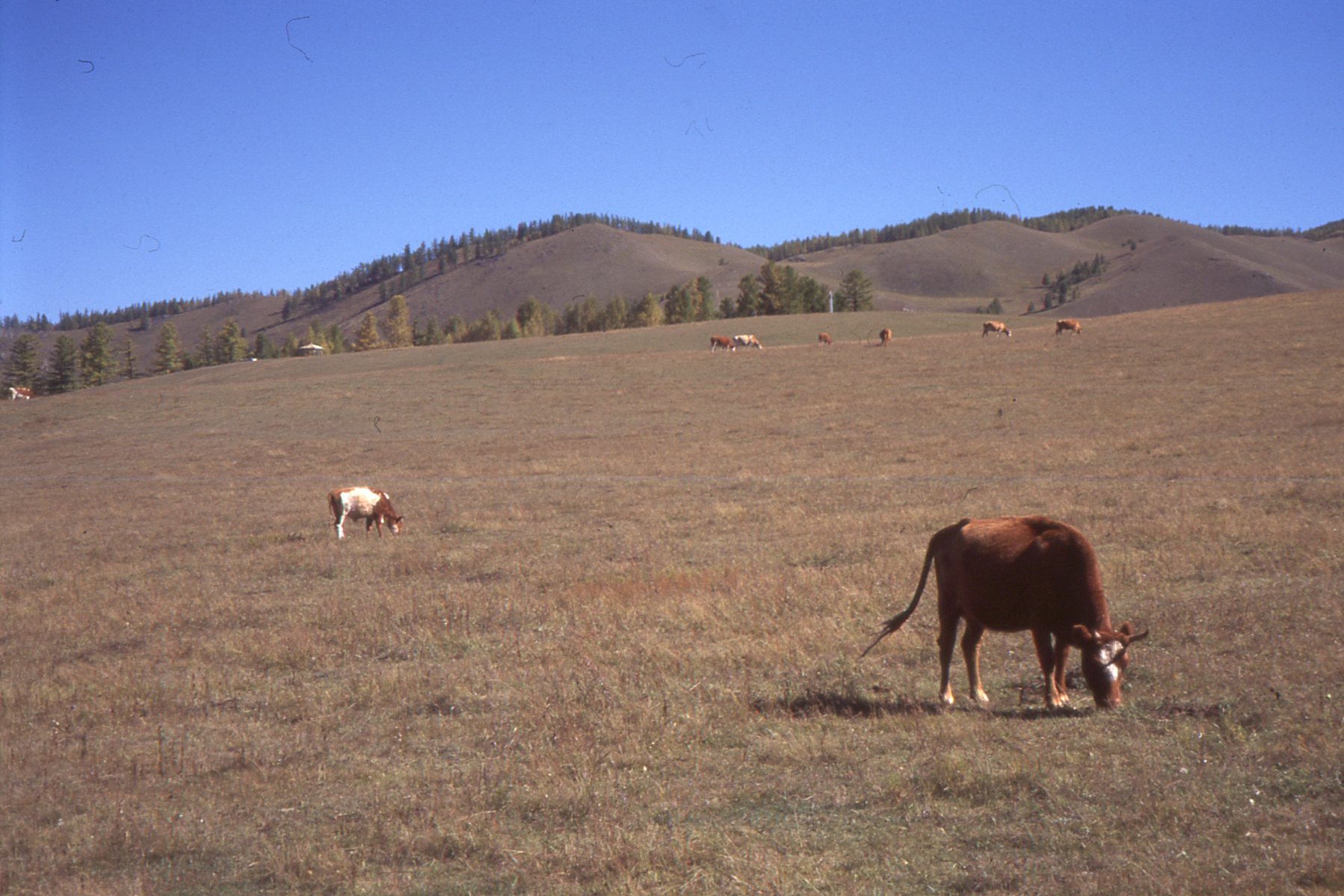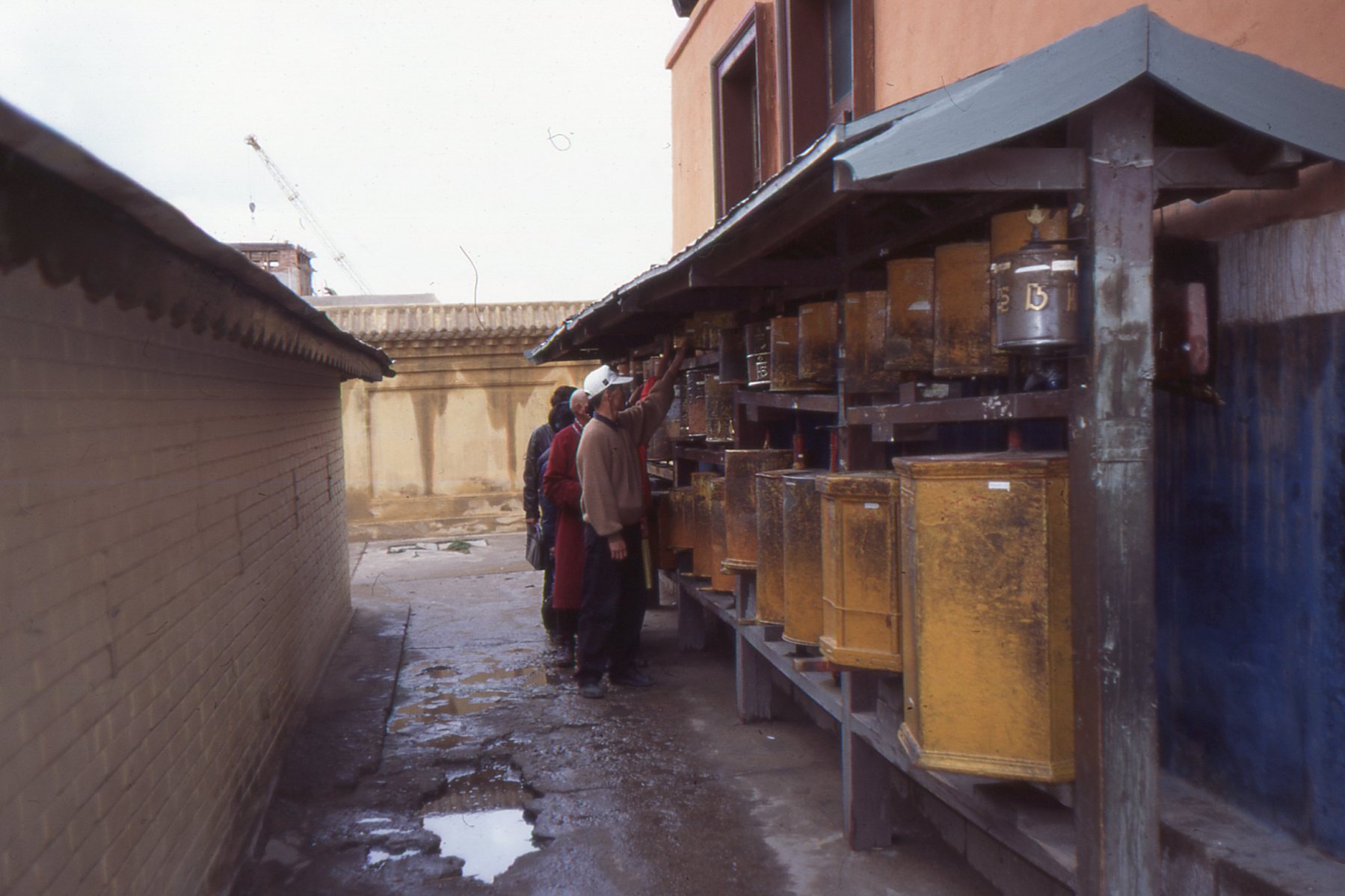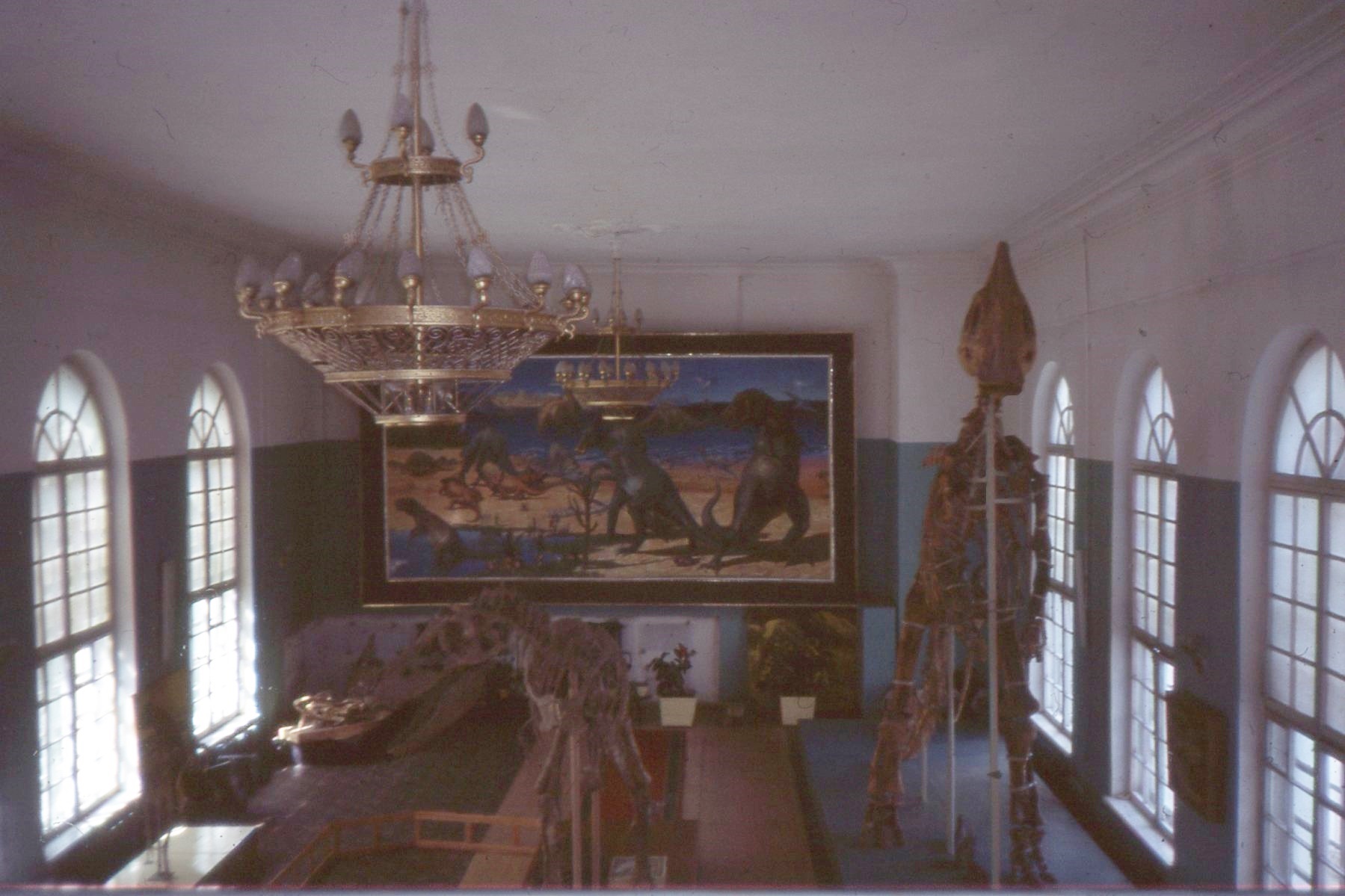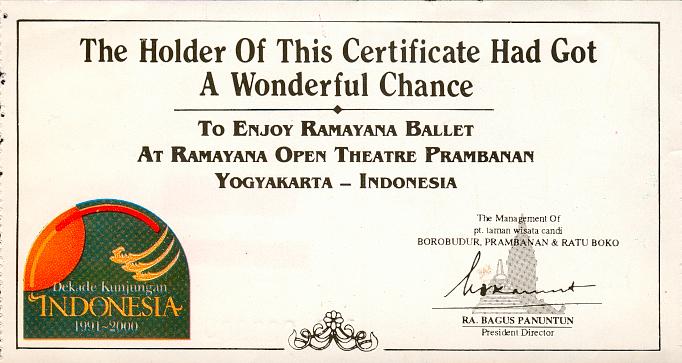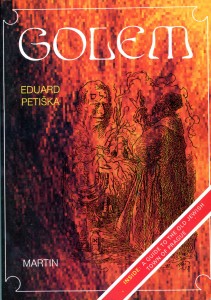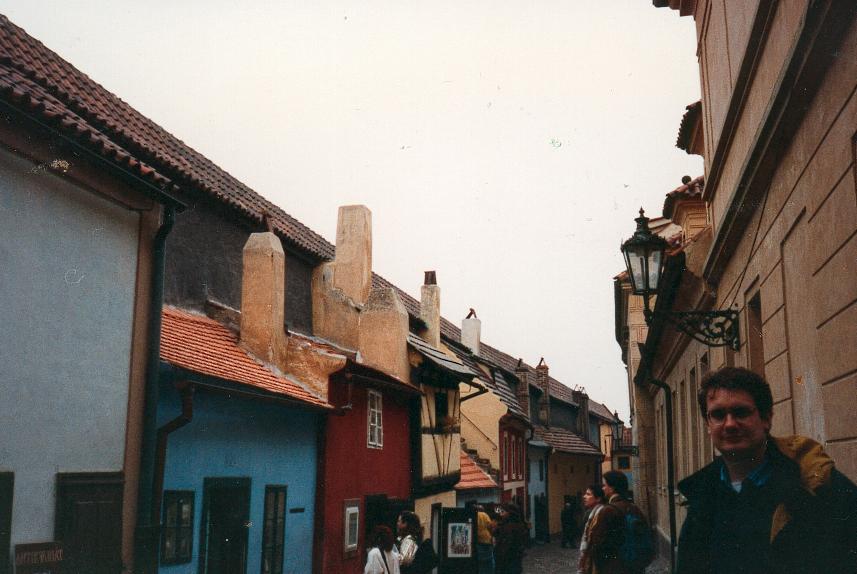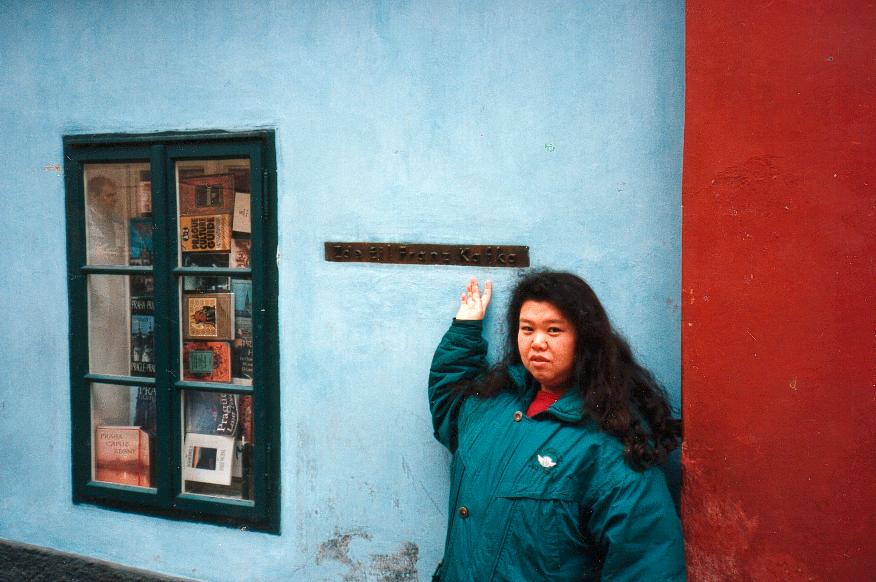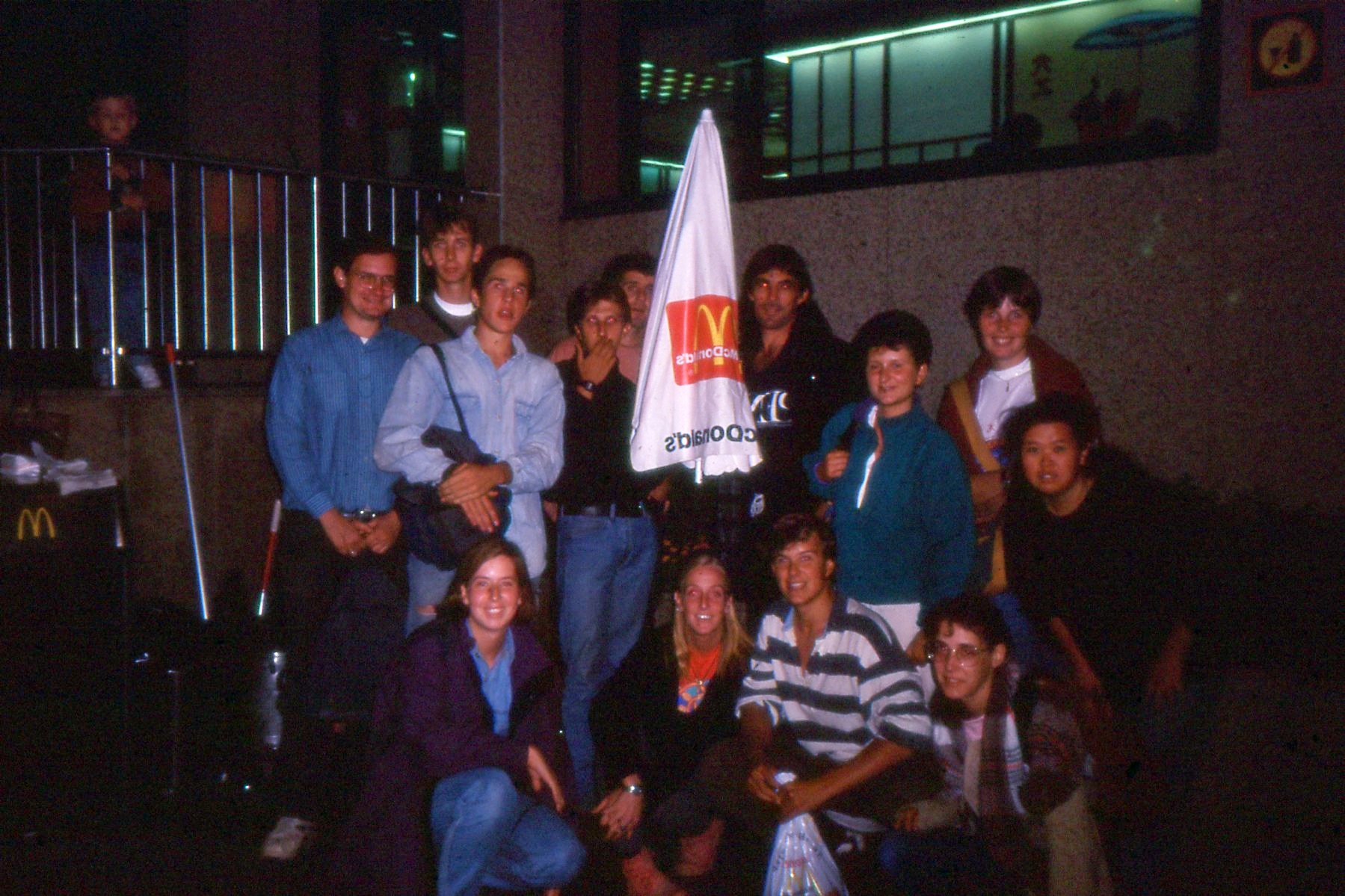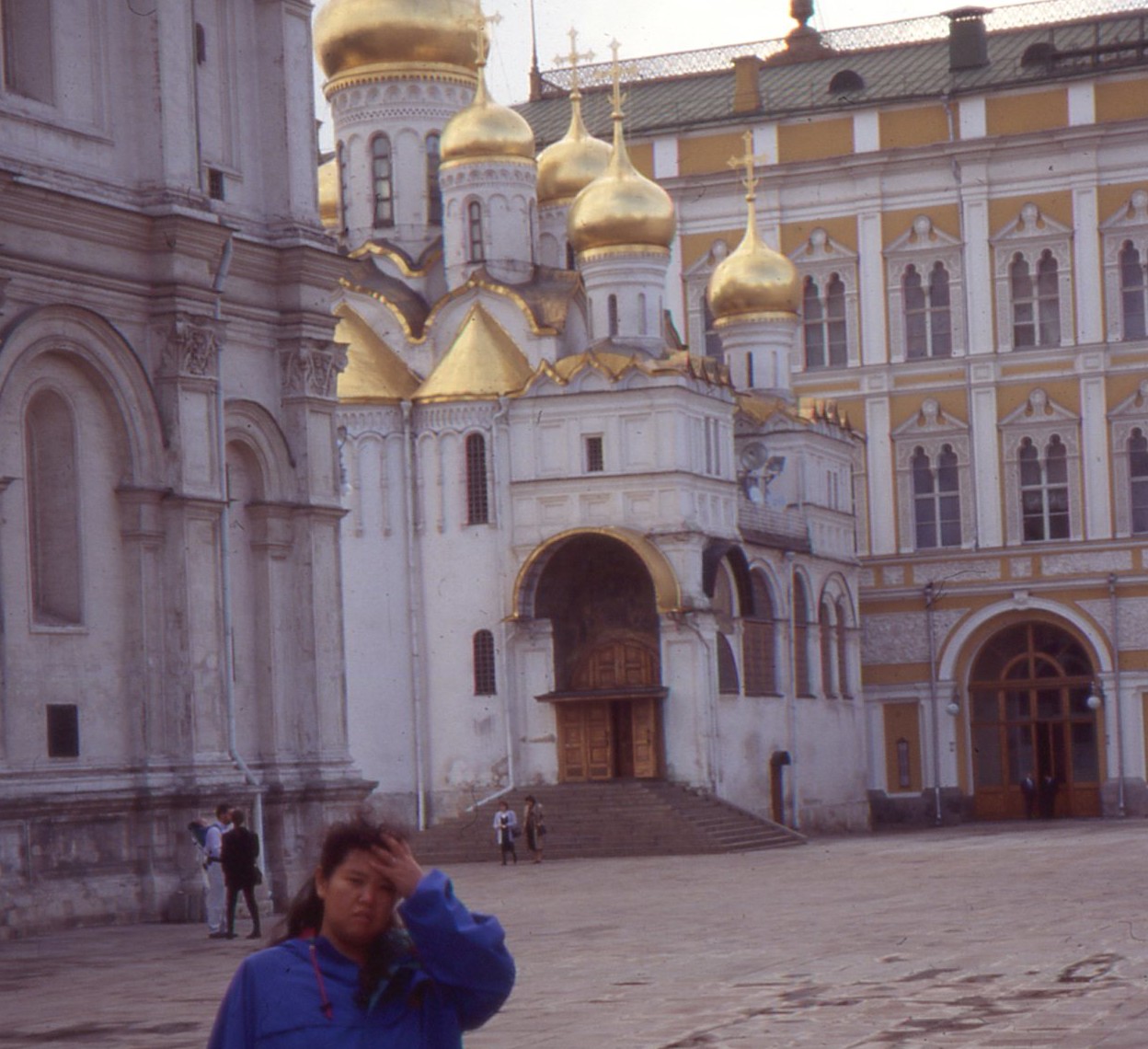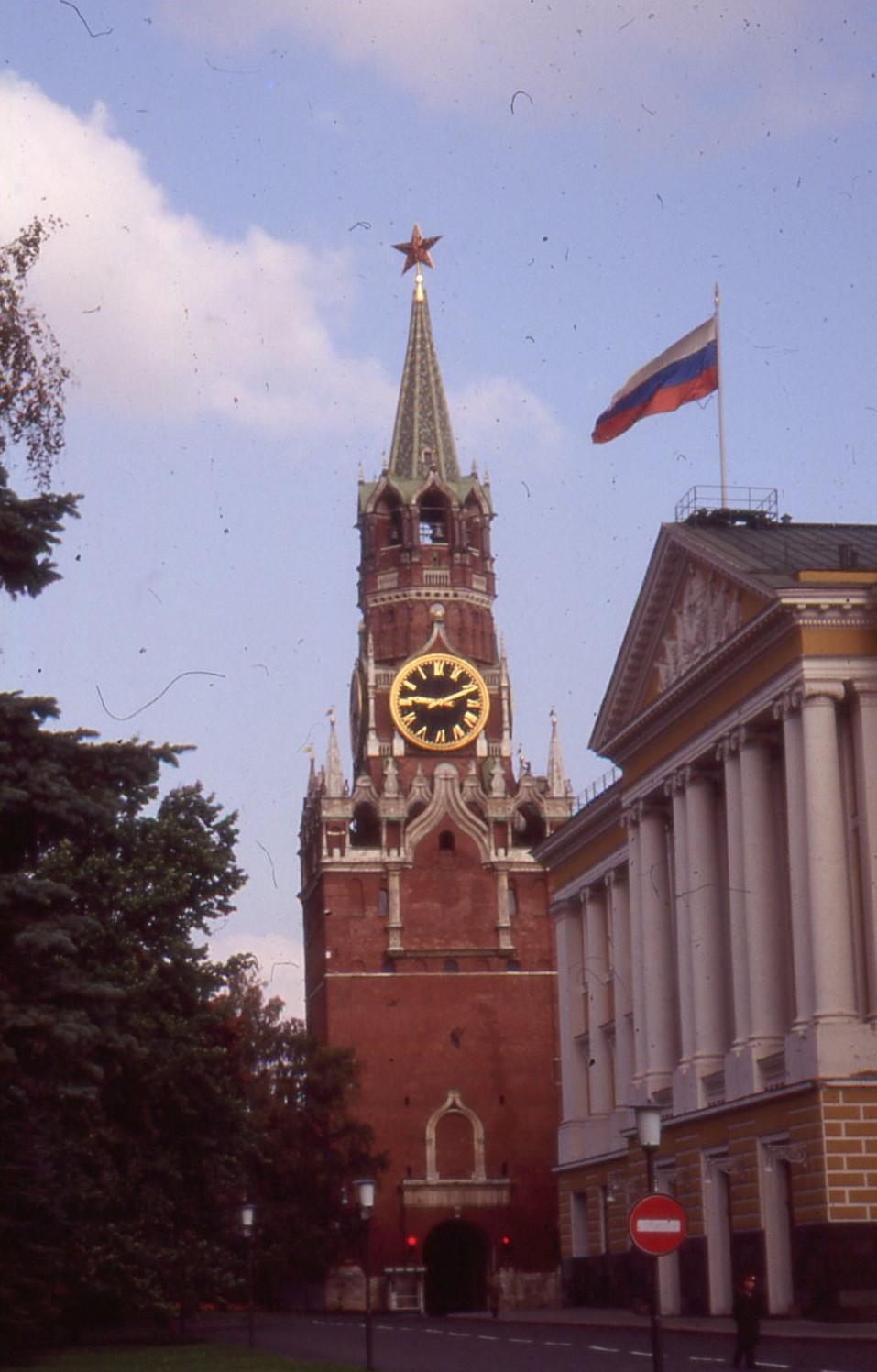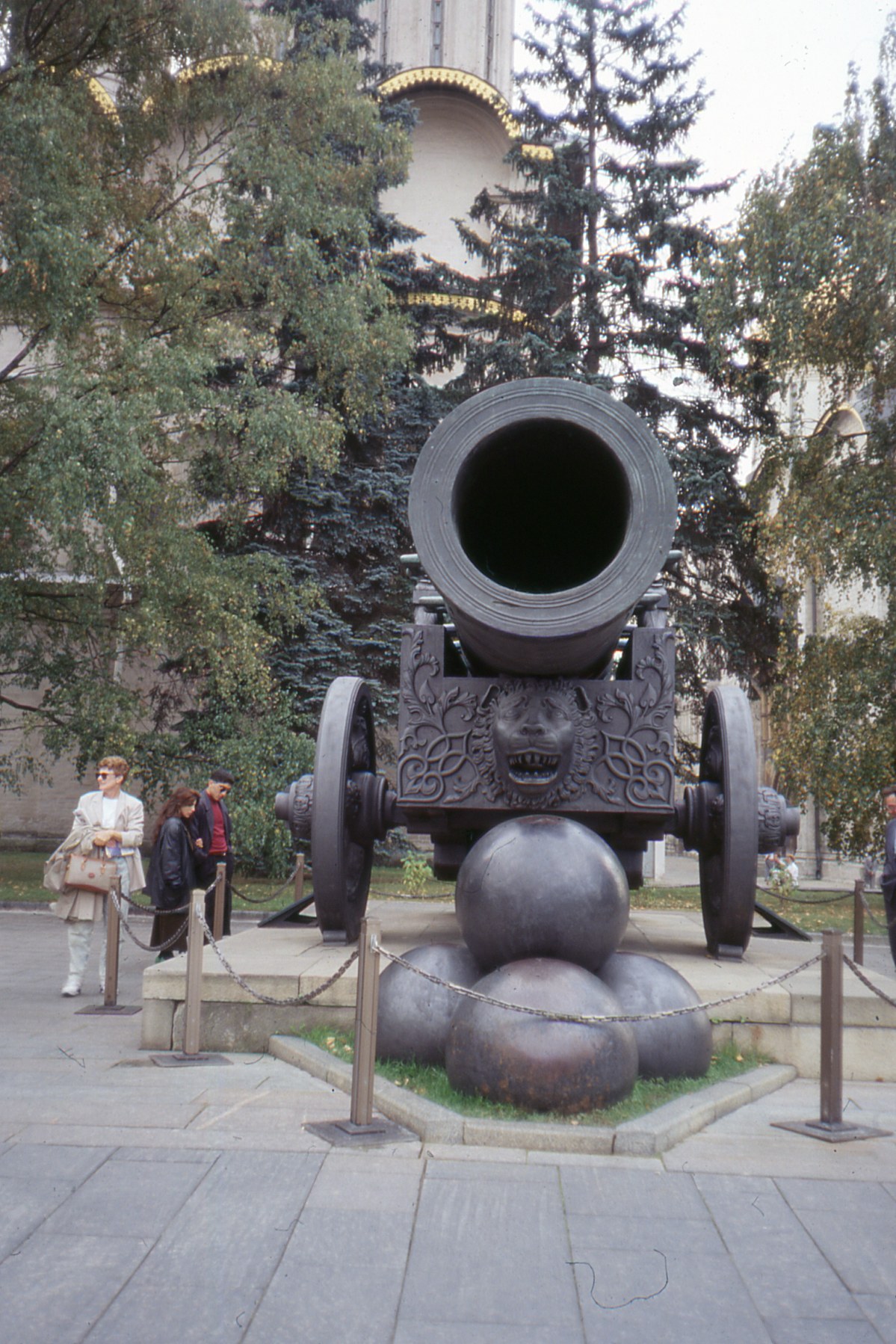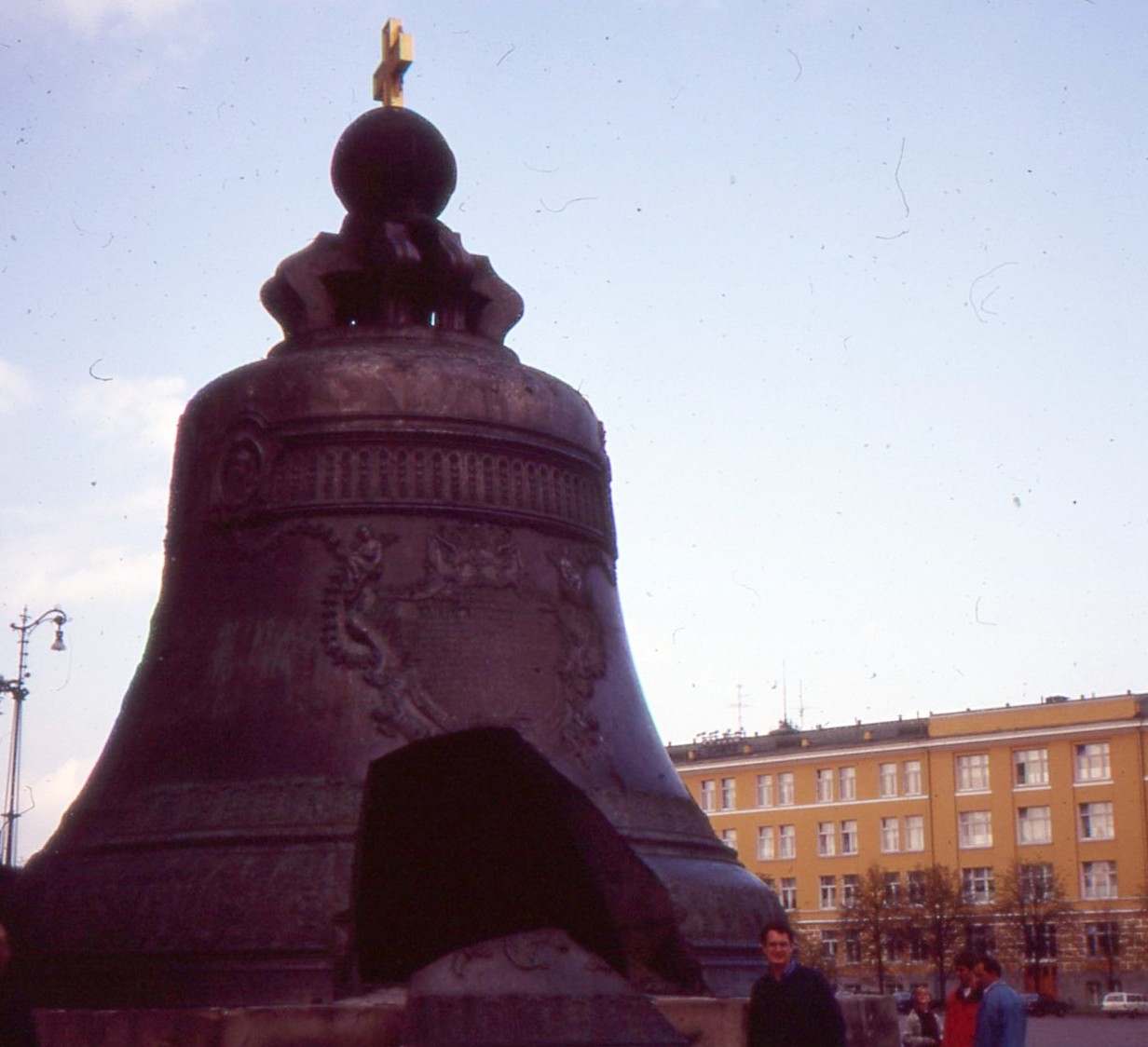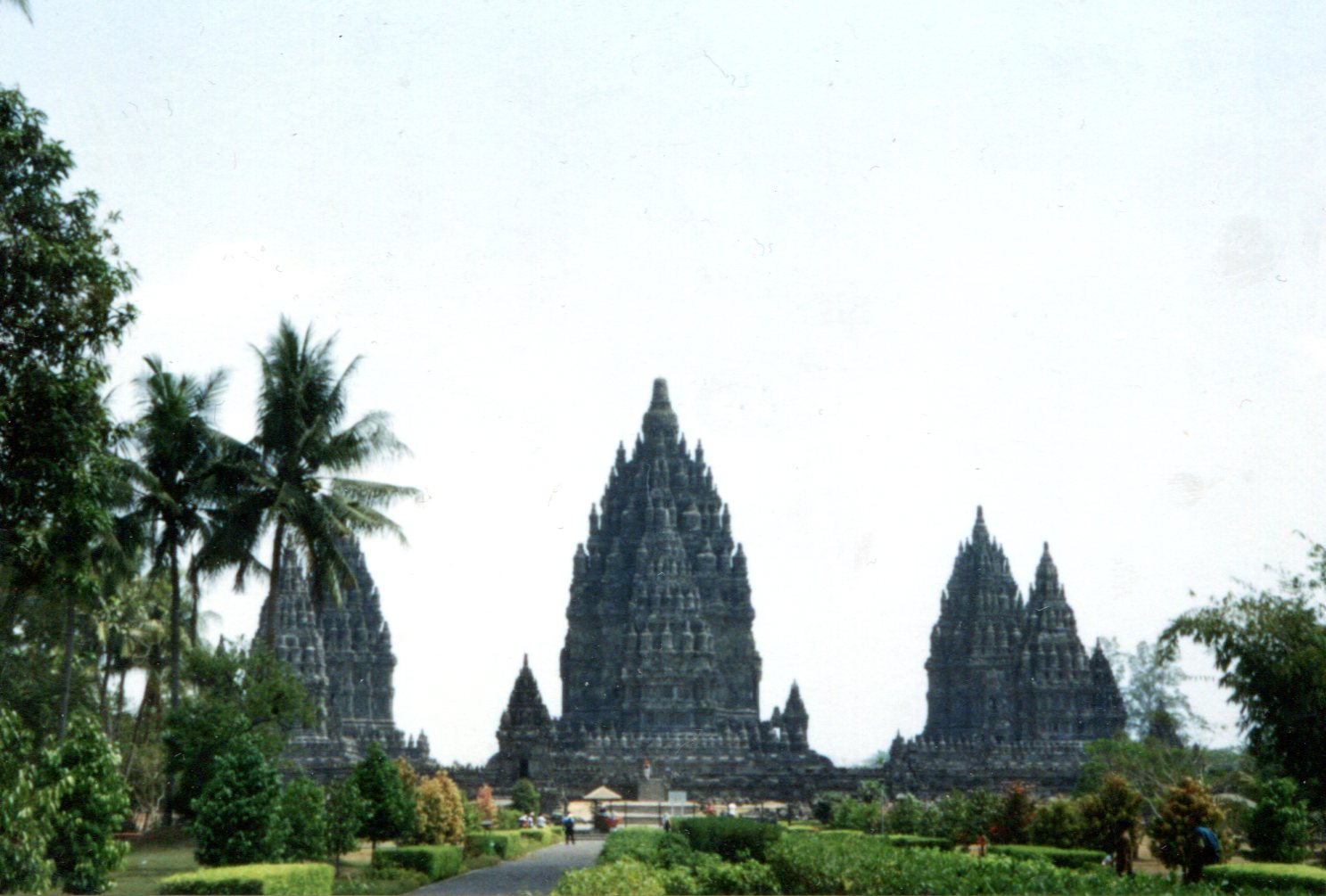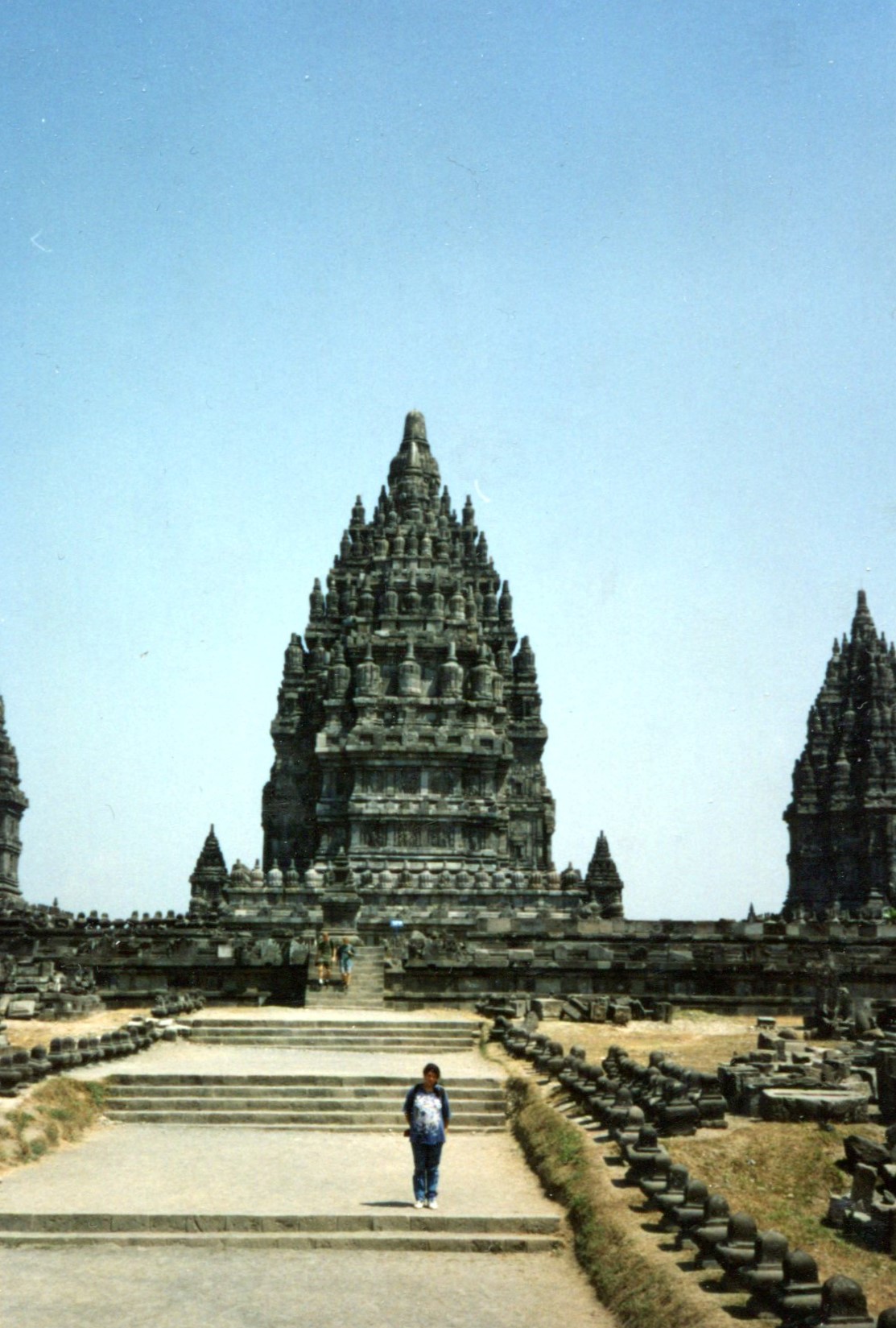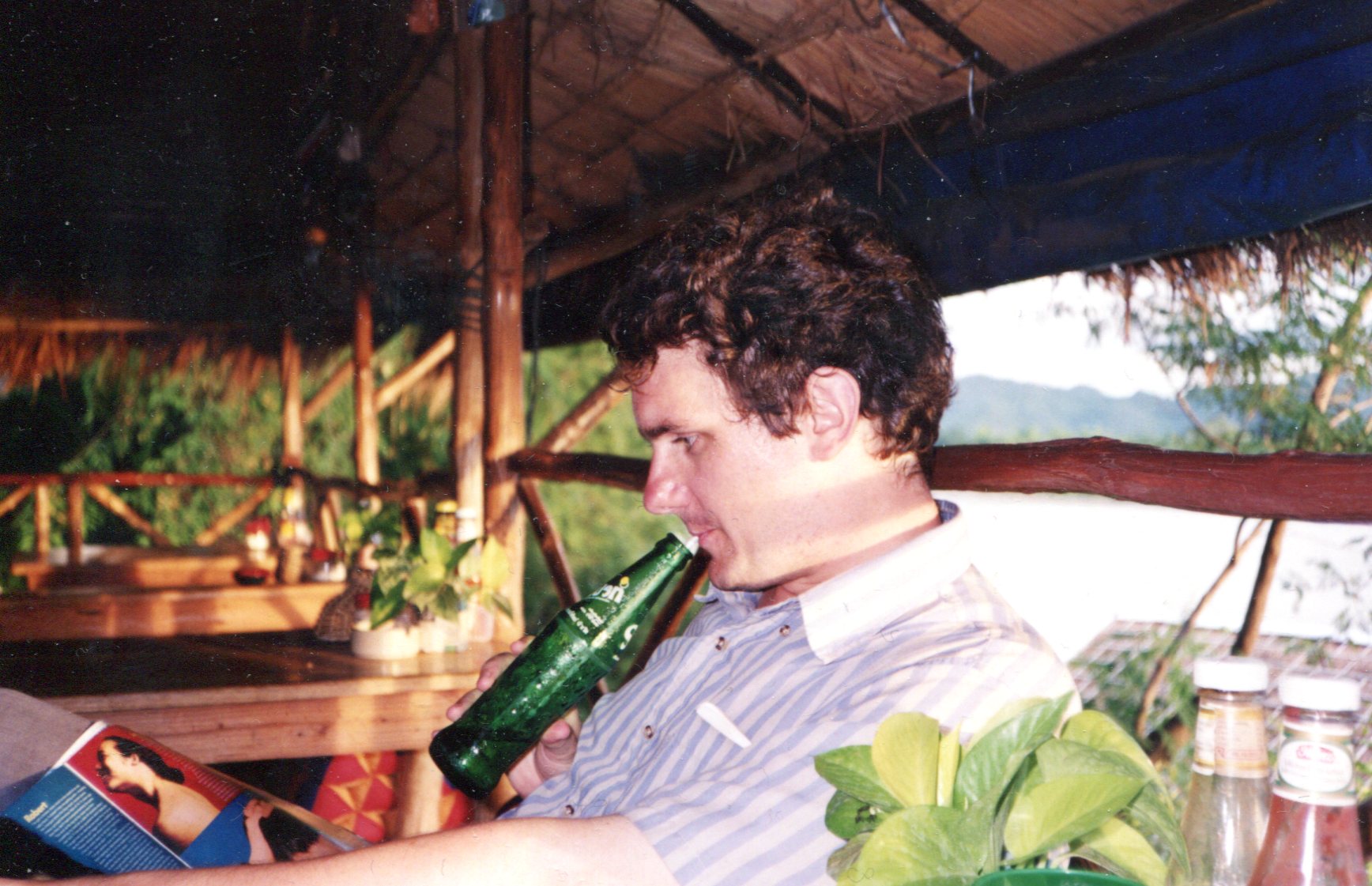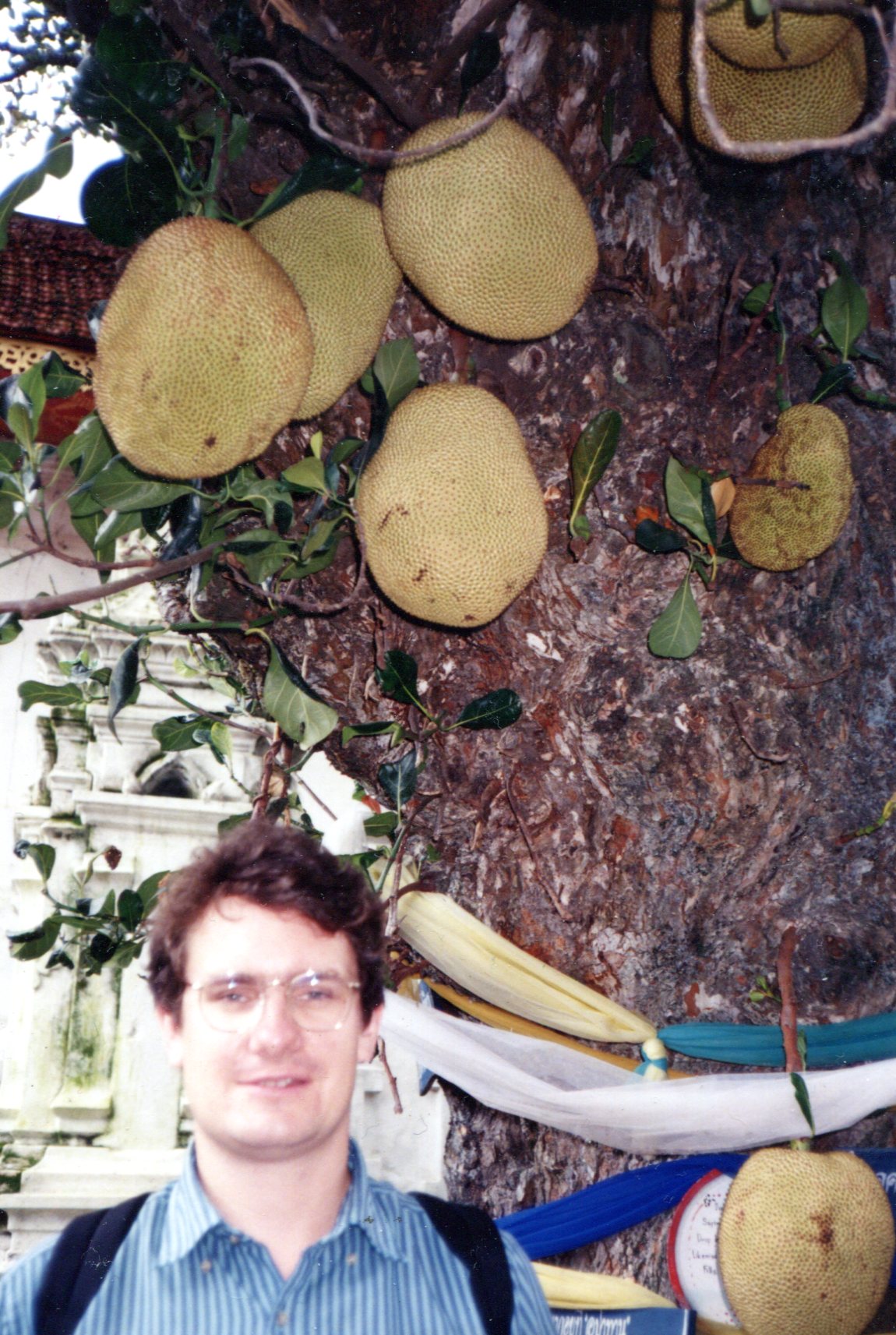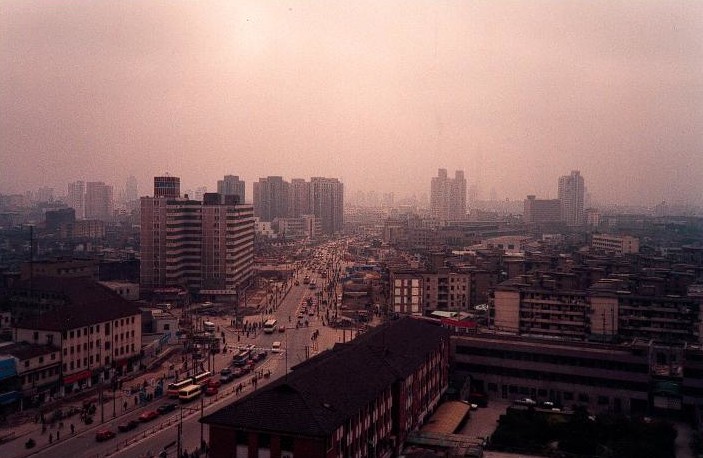There was a speaker at Speakers’ Corner in December 1994, but I don’t remember what he was speaking about. He’d drawn a crowd, though.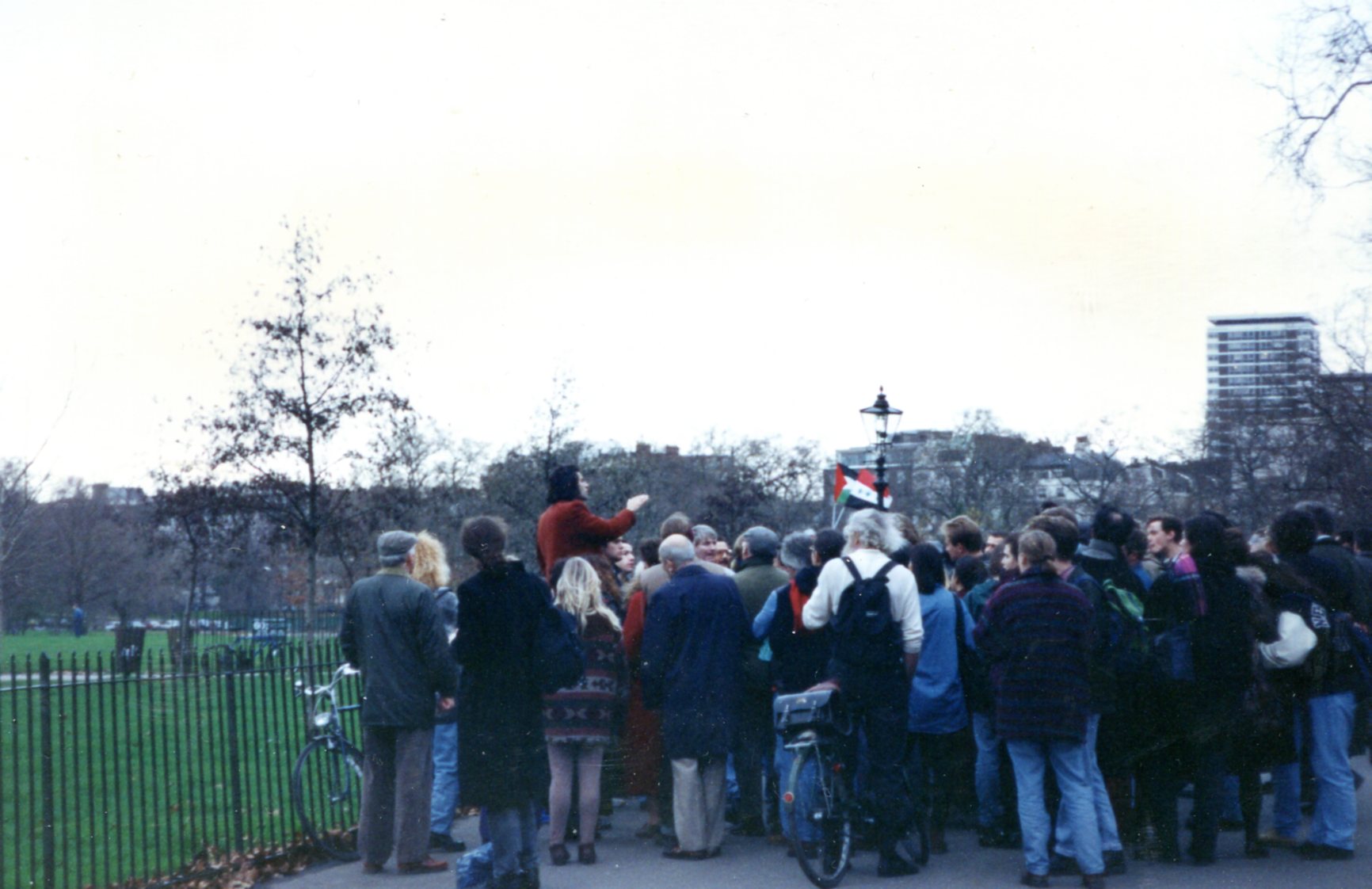
Considering that a pre-1991 Iraqi flag seems to be flying in the background, and probably a Palestinian flag behind that, Middle Eastern politics seems the likely subject. Lots of grist for impassioned public speaking there, at least in places, mostly outside the Middle East, where there’s little risk of official punishment.
I also remember an anti-Ba’athist, or at least anti-Saddam Hussein, parade in London, but that was in 1988 on one of the streets near Harrod’s. It was a thin line of people marching along, and a thin line of people watching, and (I think) some argument between some of the participants, but no fighting. There were some police around, probably wishing they could be anywhere else.
As for Speakers’ Corner, I’d made a point of going to see it one day we were in Hyde Park. Not sure how I’d heard of it, but heard of it I had. Maybe it was the lyrics in the peppy yet pessimistic song “Industrial Disease” (1982).
I go down to Speakers’ Corner, I’m thunderstruck
They got free speech, tourists, police in trucks
Two men say they’re Jesus, one of them must be wrong
There’s a protest singer, he’s singing a protest song…
The Royal Parks web site says that “the origins of Speakers’ Corner as it is known today stem from 1866, when a meeting of the Reform League demanding the extension of the franchise, was suppressed by the Government. Marches and protests had long convened or terminated their routes in Hyde Park, often at Speakers’ Corner itself. Finding the park locked, demonstrators tore up hundreds of yards of railings to gain access, and three days of rioting followed.
“The next year, when a crowd of 150,000 defied another government ban and marched to Hyde Park, police and troops did not intervene. Spencer Walpole, the Home Secretary, resigned the next day. In the 1872 Parks Regulation Act, the right to meet and speak freely in Hyde Park was established through a series of regulations governing the conduct of meetings.”
